This story is the second in a four-part Grist series examining how climate change is destabilizing the global insurance market. It is published in partnership with the Economic Hardship Reporting Project.
For millennia, the South has been shaped by its water. The bayous and brackish tributaries that drift into the Mississippi flowed with communication and commerce, while cities like Memphis and Nashville sprang up in the mouths of rivers. Suburbs grew around ports as waterways bustled. Exurbs expanded as they quieted.
Amidst these tides of progress, low-income communities have been relegated to the watery South’s “bad land — that constantly floods, that doesn’t have drainage,” said Reese May, chief strategy and innovation officer at SBP, a grassroots national recovery and resilience organization headquartered in Louisiana. When these areas are submerged, a more and more common occurrence, families who are least able to recover are hit the hardest.
May and SBP case managers watched this dilemma unfold for many years in Louisiana, as they helped New Orleans slowly rebuild after Hurricane Katrina. A full decade after the storm, May recalls a man in his 90s and his elderly daughter walking into SBP’s office. “She dragged him in the door, because he couldn’t humble himself to do it,” May said. Edward Lee was the first member of his family who was not born enslaved. He volunteered for combat duty in World War II, signing up “to serve his country at a time when his country would not stand up for him,” May said. By the time May met him, Lee had been displaced from the home he built over 10 years.
It only took SBP two phone calls to find the money to rebuild Lee’s house. “There was an enormous celebration. People were so proud of us. And it really felt gross,” he said. “That man suffered for a decade for something we might have solved in one year.” Lee’s experience sticks with May because “it reminds me of the importance not just of rebuilding a home, but of understanding why it doesn’t get rebuilt.”
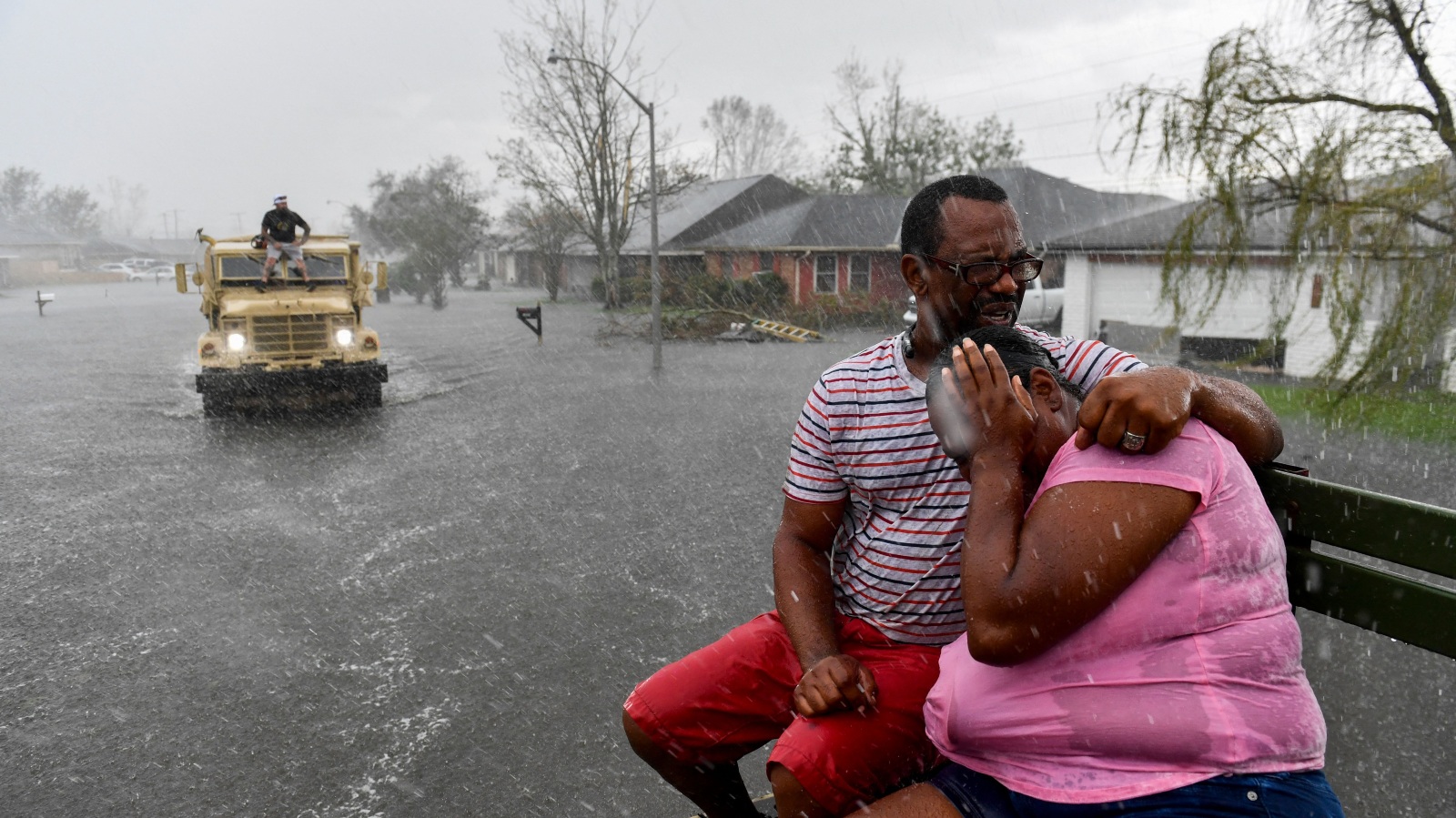
Residents in LaPlace, Louisiana ride in the back of a high-water rescue truck as rain from Hurricane Ida floods their neighborhood in August 2021. Patrick T. Fallon/AFP via Getty Images
As SBP expanded its recovery work to communities hit by natural disasters in New York and Texas, employees like May saw family after family wrestle with complications with FEMA payouts and denied insurance claims. The repercussions are rippling: Damage from natural hazards like flooding is a major contributor to national wealth gaps, amplifying existing disparities.
Across the country, flooding is a growing risk — both in how high waters surge, and as a new hazard in areas previously unlikely to be inundated. As storms arrive more frequently, flood insurance and disaster relief programs themselves are now failing.
Yet most homeowner policies do not cover flood damage, requiring families to acquire an entirely different, second insurance plan. Most of these are purchased through a government-backed program called National Flood Insurance Program, or NFIP. “Private markets pulled back from flood decades ago,” Kousky explained.
But as prices surge, hundreds of thousands of people have dropped their flood insurance, growing the burden on federal disaster assistance and straining its already stretched budgets. Many are falling through the cracks. The lack of clarity on what assistance will be available from insurance or disaster relief prevents many families from receiving the aid they need. After New England’s flooding this summer, for instance, residents who received money from the Federal Emergency Management Agency, or FEMA, in 2011 during the last once-in-a-century storm are only just realizing unmet insurance requirements mean they are ineligible for further emergency assistance.
These widespread hurdles are why SBP has stopped measuring success by how many buildings they could help reconstruct. Instead, May said, “We started thinking about what we could do to prevent a survivor from needing our help in the first place.”
The majority of natural disasters in the United States already involve flooding. It’s a problem that will get worse with sea-level rise and more intense rain events. By 2050, coastlines will see a national average of 45 to 85 days per year of high-tide flooding. Meanwhile inland, rivers and streams are spilling over their banks more frequently, a type of flooding projected to increase by as much as 30 percent as temperatures rise. Extreme rain is also becoming more common: Peer-reviewed data from the First Street Foundation, a climate research nonprofit, suggests about 20 percent of the country will now see a “once in a century” rainfall about every 25 years.
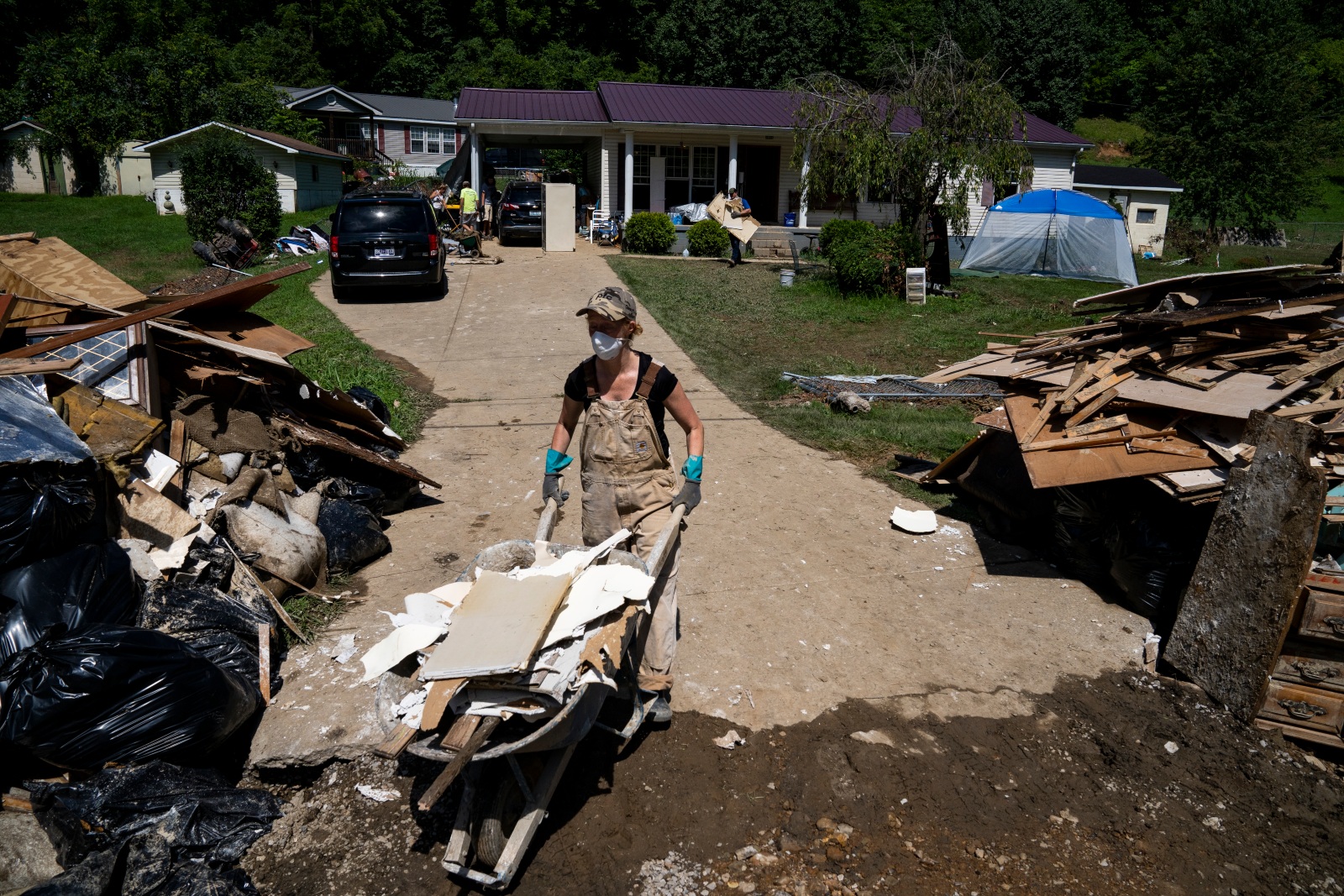
Laura Humphrey walks a wheelbarrow to a pile of debris while volunteering to clean up flood damage in Perry County, eastern Kentucky in 2022. Michael Swensen/Getty Images
Despite this risk, just 4 percent of homeowners in the U.S. have flood insurance. Even those who do pay for flood protection are often misinformed about their property’s risk.
FEMA produces maps that designate which houses are in a 100-year floodplain, estimated to have a 1 percent chance of flooding in any particular year. Homeowners in these areas with federally-backed mortgages are required to purchase flood insurance. While a few private companies still offer their own policies, the vast majority of coverage that Americans buy is through FEMA’s National Flood Insurance Program. Introduced in 1968 after Hurricane Betsy, the country’s first billion-dollar hurricane, the federal program was intended to help provide affordable flood insurance, and in turn address the ballooning expenses of post-disaster relief.
Funded by the government and delivered through private companies, the NFIP program will insure up to $250,000 of building damage. (That limit has not changed since 1994, when the average cost to build a house was $154,000.) But as massive storms like Katrina and Sandy become more frequent, the program has run $20 billion into the red; last year, its interest on that liability alone was $280 million.
Thanks to climate change, the problem is compounding. “Frequent high-cost flooding will prevent the NFIP from paying its debt,” a recent FEMA report warned. This is partly because the NFIP cannot refuse to insure properties, something critics have long suggested encourages building — and rebuilding — in vulnerable places. By law, it also cannot raise rates for most policies by more than 18 percent a year. “We want to maintain cheaper insurance than it actually costs to pay all those losses,” said Carolyn Kousky, the associate vice president for economics and policy at the Environmental Defense Fund.
Though FEMA’s flood maps influence everything from people’s insurance rates to where development occurs, they haven’t been doing a good job of capturing changing risks. Between 2015 and 2019, 40 percent of NFIP claims were outside of FEMA’s flood hazard zones. The agency is supposed to update its maps every five years, but delays are common, and pressure from local residents seeking to develop or politicians eager for larger tax bases can influence their extent. These maps use historical meteorological data that doesn’t take climate change into account.
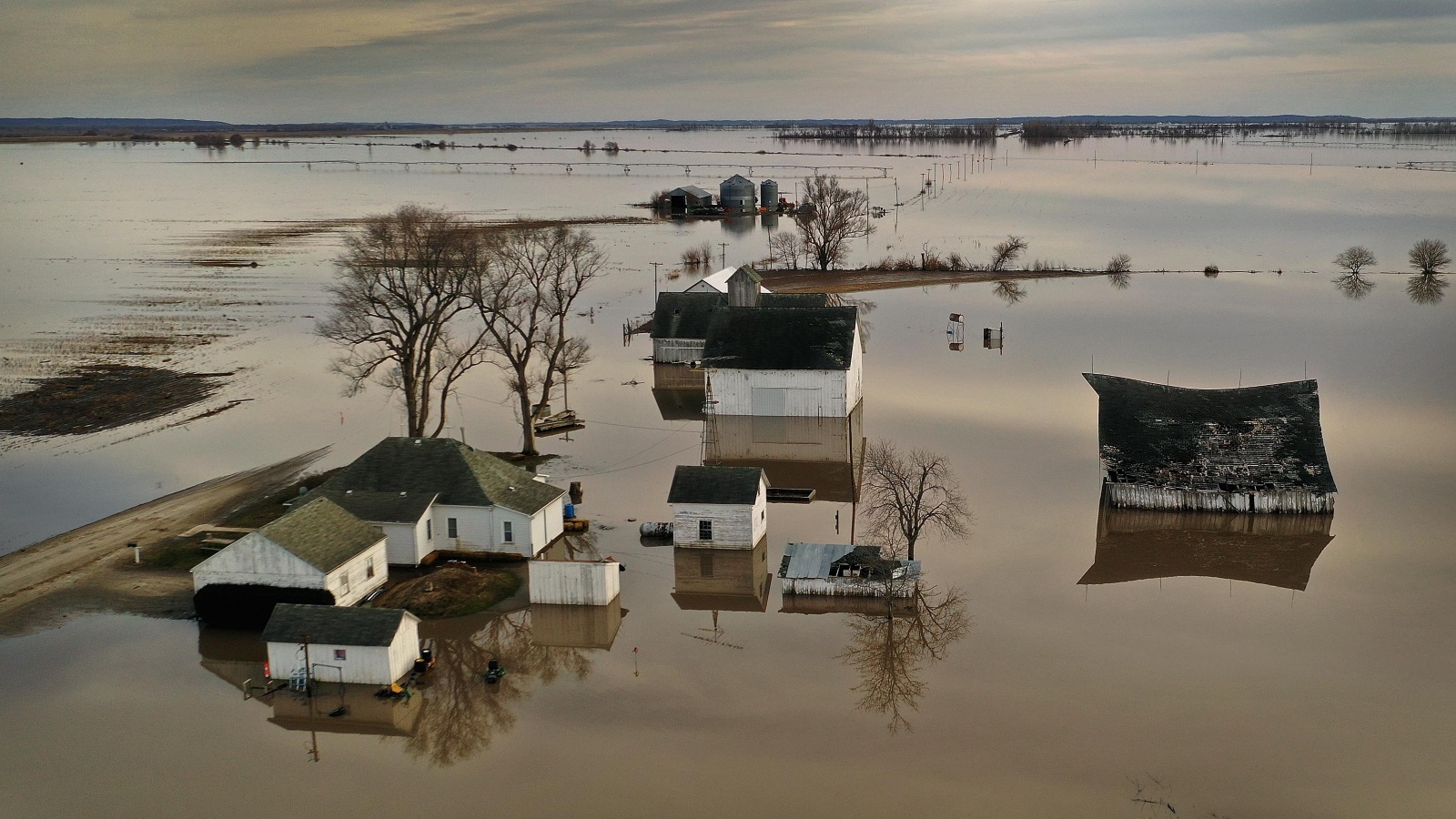
Floodwater surrounds a farm in March 2019 near Craig, Missouri. Scott Olson/Getty Images
To help address some of these concerns, FEMA recently decided to change its assessments for the first time since the 1980s. Roy Wright, the former chief executive of the National Flood Insurance Program who kickstarted the process back in 2015, says the agency’s new Risk Rating 2.0 Program will incorporate more sophisticated models, improve the agency’s accuracy, and catch up to private insurers, who have long used more advanced techniques. The new methodology, which began in 2021 and rolled out to all of NFIP’s policies in the spring of 2023, now considers rainfall-driven flooding, and includes factors like individual property value, and the cost to rebuild.
One of FEMA’s goals with these changes was to more fairly price its insurance. But while nearly a quarter of NFIP policyholders saw their premiums go down, on average its rates increased. Policies in some states like Louisiana and Florida spiked by more than 500 percent, phased in over years. “There is no greater risk communication tool than a pricing signal,” Wright said. But “people don’t like to know that they’re at risk. And they most assuredly don’t like it when there’s a price for it.” Ten states and many smaller municipalities are now suing to block these higher premiums.
Insurance experts like Kousky think Risk Rating 2.0 is just one of many steps still required to improve the program. “Risk Rating 2.0 was very necessary,” she said, “but it needed to be coupled with an affordability program.” She thinks a safety-net plan is essential to help cover the rising costs of flood insurance — both for lower-income homeowners, and the mortgage creditors who stabilize the economy. Wright agrees further changes are needed, pointing out that Congressional limits on NFIP payouts have not even kept up with inflation. “If you want to have an affordability program, you’ve got to pay for it,” he said, adding that to do so, Congress will have to stop relying on insufficient premium revenues.
Yet the government has continually kicked these decisions down the road through short-term extensions of the NFIP program, which was set to expire again this fall. In September, the Mortgage Brokers Association wrote in a letter to Congress that allowing this was an “imminent threat” for real estate markets, and that better long-term solutions were overdue. “MBA members are very concerned that private property insurance has reached a point of critical market dislocation,” the letter said. The program almost ground to a halt along with government funding during the Republican stand-off at the end of September. A lapse in the NFIP, which would disrupt thousands of real estate transactions a day, was only avoided by a temporary 45-day extension. In the meantime, a slew of major disasters this summer had depleted FEMA’s Disaster Relief Fund, running the agency into debt and forcing it to restrict its activities in August. As part of the last-minute temporary spending package, Congress approved an additional $16 billion for disaster relief — just in time for New York City to face a deluge that raised water levels so high a sea lion escaped from its enclosure at the Central Park Zoo.
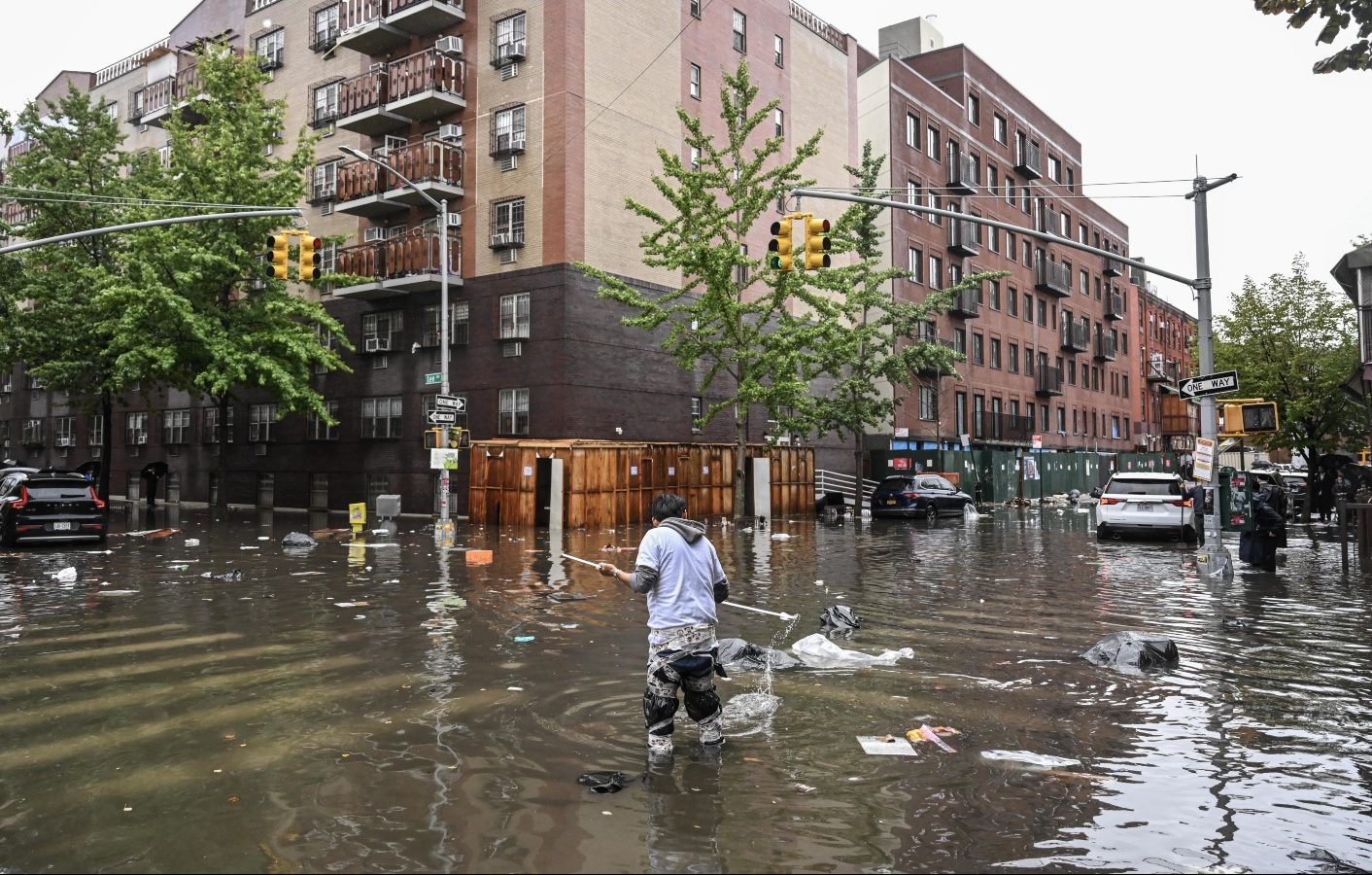
New Yorkers wade through flooded streets in Williamsburg, Brooklyn following heavy rains in late September. Fatih Aktas/Anadolu Agency via Getty Images
The close calls demonstrate just how unstable these systems are. As storms repeatedly swamp what was formerly dry land, someone is going to have to pay for flooding. Reinsurance company SwissRe recently found that although improvements in Florida’s building code have reduced annual losses expected from hurricanes by 90 percent, those gains have been “dwarfed” by increased exposures, primarily from a big surge in population living in risky areas. But conversations about the only true alternative — managed retreat, or encouraging communities to relocate — have been halting.
“Our responses are always punctuated by disasters,” Kousky said. After a catastrophe like Hurricane Andrew, for example, insurance prices go up, the number of companies writing policies goes down, and the role of regulators was thought to be to help protect consumers from that type of volatility. “But the prior expectation was that everything would re-calibrate post-disaster — as time went on, more capital would flow into the market.”
Now, she said, it’s not just that “insurers had to get through the shock of having such high levels of losses — they are now actually fundamentally rethinking the trajectory of risk.”
As the country’s insurance system flounders, companies are getting stricter with their payouts. Many homeowners are finding out they have sub-limits — conditions that exclude broad categories of damage, like mold, or policies that only kick in if a storm is named — after a disaster. “People go to rebuild, and they find out that they actually have insufficient amounts of money to get back on their feet,” Kousky said.
That gut-wrenching experience turned Douglas Quinn’s dream of living on the water into a nightmare. He had carefully checked FEMA’s flood zones before purchasing a home on the shore in Toms River, New Jersey, in 2011. The 50-year-old house had never flooded, but with its beachfront location, Quinn, a financial advisor, chose to buy the NFIP’s maximum coverage amount of $250,000. As Hurricane Sandy hit New Jersey, he waded out of his new home, shocked at how deep the water had risen. The dark night was illuminated only by flashes from downed power lines shorting out.
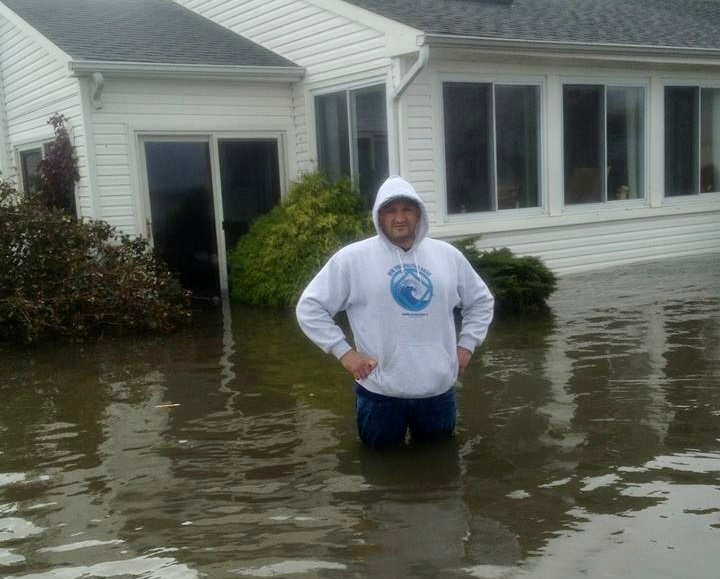
Douglas Quinn stands in floodwater outside his home in Toms River, New Jersey in 2012. Courtesy of Douglas Quinn
A little over a year after he moved in, Quinn had lost almost everything he owned to the storm. At first, he wasn’t worried. “I believed in insurance,” he said. His insurance company sent an engineer out to assess his damage. They claimed the foundation damage was not from the pressure of the water, but rather a pre-existing problem from movement in the supporting soils — something excluded from his flood policy. But Quinn had done a pre-purchase inspection, so he had proof the cracks were new. “In the beginning, I’m just kind of thinking, well, it’s a mistake,” he recalled. “I just need to show them the pictures.”
He and his teenage daughter lived out of his car while they tried to get through the paperwork and find a temporary place to rent. Despite his meticulous appeal, FEMA sided with the insurance company. (The nonprofit New York Legal Assistance group found that in post-Sandy appeals, the agency sided against homeowners 92 percent of the time.) Along with over 1,600 other homeowners, Quinn filed a lawsuit. It was still pending when New York’s new attorney general launched a criminal inquiry, uncovering evidence that engineering reports had been routinely changed by insurance companies to lower claims, prompting FEMA to review all damage claims from the hurricane. “It is intentional. It is a strategy. And it happens all over the country,” Quinn said.
Because of this experience, he left his career in finance to become the executive director of an insurance watchdog organization, American Policyholder Association. In 2021, the association was working with whistleblowers within the Florida insurance industry. They filed an extensive report about similarly altered assessments to the state Office of Insurance Regulation, where it sat for months. Then Hurricane Ian hit — and new homeowners started running into the same hurdles. In the aftermath, insurers or the vendors they hire to help process claims have been aggressive in their attempts to reduce claims, in some cases directly modifying reports to lower payouts. One such case downgraded a $60,000 estimate for roof repairs to roughly $3,000, according to Quinn.
The Insurance Commissioner of Florida at the time, David Altmaier, resigned December 28, 2022 — days before a new anti-lobbying law went into effect, banning former agency heads from a ‘revolving door’ into lucrative positions as lobbyists for six years. In March of 2023, Altmaier announced his new position as a lobbyist at the Southern Group, where he says he’ll “leverage over a decade of experience to help insurance and insurance-adjacent entities navigate the complex world of regulation.”
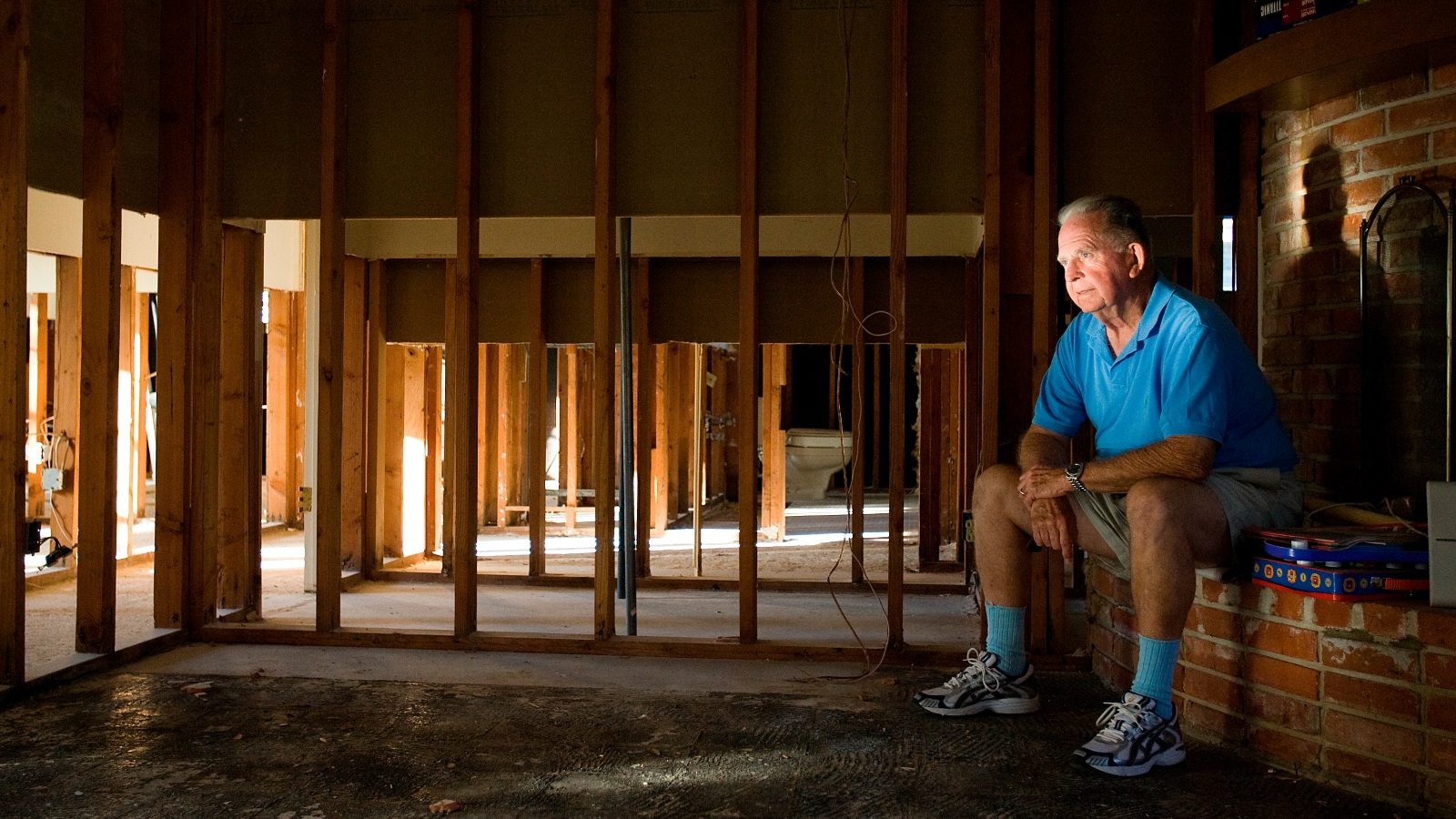
A resident of Seabrook, Texas sits in his house following the removal all waterlogged carpeting, flooring, and lower dry wall after Hurricane Ike in 2008. Nick de la Torre/Houston Chronicle via Getty Images
These kinds of widespread insurance practices worsen existing disparities; research shows Black homeowners pay higher premiums than nonwhite homeowners. May at SBP says that his clients regularly see similar biases in FEMA payouts, with people of color receiving far less for the same amount of damage. To make things worse, many Black property owners have inherited their homes, and can face challenges documenting their title, making it more difficult to file claims. Racial differences in who owns homes add to this gap: nationwide, 56 percent percent of Black families rent, compared to 28 percent of white families.
And flooding often hits neighborhoods with high numbers of renters hardest. When a landlord’s insurance costs skyrocket, that’s often passed on to tenants through rent increases. While FEMA does offer some flood insurance for renters, many do not purchase it, leaving their own property losses unprotected. And some rental situations, like removing a destroyed mobile home from rented land, are not covered at all. “When people don’t get paid, it’s a generational loss,” said Quinn.
Even with his financial background, navigating the insurance claims process during the years he was trying to piece his life back together almost broke him. “I had days when I couldn’t get out of bed,” he said. These difficulties are why May and SBP are now advocating for changes to disaster relief, including creating a single application for disaster assistance that would streamline sharing information between the federal, state, and local agencies that survivors often bounce between for years.
Meanwhile, in New York City, a unique partnership is now trying out a small pilot program to help get people recovery funds more quickly after a flood. In a collaboration that includes the Environmental Defense Fund, SBP, broker Guy Carpenter, and major insurance company Swiss Re, the team launched a parametric insurance scheme this summer. If particular metrics are hit — a combination of factors like a certain amount of rainfall or flood footprint — an automatic payment of up to $15,000, depending on the severity of the flood, will be issued to low-income families and can be used for anything the family needs. Once an event that meets the program’s requirements occurs, its application portal will open, and families who live in certain neighborhoods will be able to apply for these payments.
With this kind of approach, “You don’t have to send a loss adjuster weeks after the event to assess how much damage there was, and then fight with your insurance company,” Kousky of the Environmental Defense Fund explained. She hopes the program, the first of its kind in the United States, will be able to scale up quickly. It is funded through a joint program between the National Science Foundation and the Department of Homeland Security.

A homeowner in the Breezy Point section of Queens, New York tries to dry out her waterlogged wedding album following Hurricane Sandy in 2012. Neville Elder/Corbis via Getty Images
New solutions are sorely overdue. In 2023, there have already been 24 disasters that cost more than $1 billion in damages, a new national record. Yet since the pandemic began, the number of people moving into the most-flood prone counties have more than doubled, putting an additional 400,000 Americans at risk. “We need a collage of solutions,” Kousky said, “because there’s not just one thing that will solve [the insurance crisis].”
In the meantime, once again in the midst of hurricane season, Quinn catches himself constantly looking out his window at the water, checking to make sure it’s not rising. After seven years, he was finally able to return to his house — and it’s now built 10 feet higher. But the trauma of losing his faith in the financial systems he thought protected him hasn’t dissipated. “It’s a storm after the storm,” he said. “When that safety net fails, what you go through is devastating. And nobody talks about it.”
Flooding can destroy a house in a night, but the full tragedy, Quinn said, takes years to unfold. “The news crews show up in their windbreakers, they find the worst damage that they can stand in front of while they shoot. And then poof, they’re gone,” he said. “Nobody follows what the survivors go through — the months and years of slow, grinding recovery.”
>>> Read full article>>>
Copyright for syndicated content belongs to the linked Source : Grist – https://grist.org/economics/what-happens-when-americas-flood-insurance-market-goes-underwater/




















![Forest ecology cannot be reduced to arithmetic, says M.I. Varghese [Interview] – Mongabay-India](https://earth-news.info/wp-content/uploads/2025/12/328946-forest-ecology-cannot-be-reduced-to-arithmetic-says-mi-varghese-interview-mongabay-india-350x250.jpg)










![Forest ecology cannot be reduced to arithmetic, says M.I. Varghese [Interview] – Mongabay-India](https://earth-news.info/wp-content/uploads/2025/12/328946-forest-ecology-cannot-be-reduced-to-arithmetic-says-mi-varghese-interview-mongabay-india-120x86.jpg)